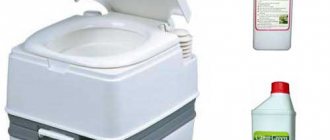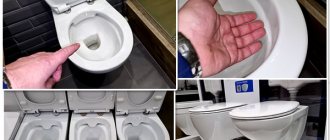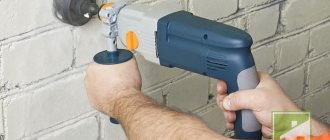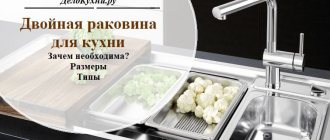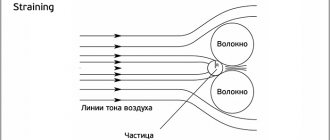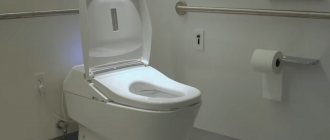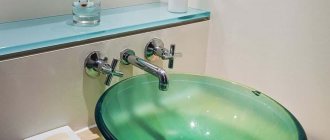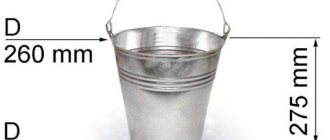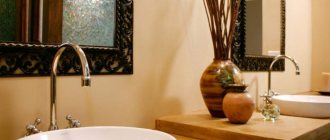In total, a person spends about hours of his life in the toilet. I think this is a serious argument in favor of taking the arrangement of this modest-sized room very seriously. Today we will tell you not only how to choose the right toilet, but also present the most popular models so that you make the only right choice.
The supply of sanitary ware for toilets on the market reflects the established demand for it as clearly as possible. If a person can do without expensive tiles and suspended ceilings in his bathroom, then he cannot do without a toilet. People's appetites vary, but the set of criteria that determine which toilet is best to choose remains unchanged.
So, first of all, let's consider the choice of material from which the toilet is made.
Materials
Sanitary Ware
Perhaps the most common material, which is based on fine-pored white ceramics, coated with enamel of one color or another. Compared to other materials, sanitaryware is relatively cheap, and this is the reason for its overall popularity. Like any material of this class, sanitary ware has its drawbacks. The main one is the high abrasion of the enamel, which leads to the penetration of moisture into the very structure of the ceramics. As a result, the strength of the product slowly but surely decreases. And then until the bowl is completely destroyed not far away, especially if you or your relatives are quite impressive in size.
Porcelain
In appearance, many people confuse this material with earthenware, but the price of toilet bowls puts everything in its place: porcelain is based on the same white clay, but during manufacturing it is diluted with feldspar and quartz and acquires more solid technical characteristics. Accordingly, the enamel that covers clay, does not wear out so quickly, and pleases the happy owners of porcelain toilets with a rich color for quite a long time. Not for the rest of their lives, of course, but about twice as long as a sanitary ware toilet. However, you need to pay well for good porcelain: its price is higher in comparison with the above-mentioned earthenware products by about 40-45%.
Stainless steel
A less popular material, but much more durable and durable. Toilets made of steel are absolutely not afraid of moisture and, due to their durability, are excellent for public spaces. Even if some vandal wants to mock the steel “white friend,” he is unlikely to succeed. For an unlimited warranty period of use, you have to pay accordingly - steel toilets are more expensive than even porcelain products.
Cast iron
Have you ever seen cast iron toilets? Surely not, but this is not surprising: they are very rarely offered for sale in ordinary plumbing stores. The explanation for the market’s dislike for this material lies on the surface: cast iron toilets are very heavy and unreasonably bulky. These disadvantages cannot be overcome even by the resistance of cast iron to corrosion and rust.
Marble, artificial stone
One of the most expensive materials for toilets, which is in demand primarily among those who welcome the unique design of the room and have the means to realize their most “kosher” ideas. Toilets made of marble and artificial stone are very hygienic, do not lose color, and are quite economical in terms of water consumption, since bacteria and dirt do not linger on the absolutely smooth surface of the flush area. It is unlikely that you will be able to find such toilets in ordinary plumbing stores - they are usually made to order and have a unique design style.
Plastic toilets
A popular material for bathtubs, acrylic, is also successfully used for the manufacture of toilets. As a rule, such toilets are very light and easy to install, but their durability leaves much to be desired. Most often they are used for summer cottages and various auxiliary premises and very rarely at home.
Choosing the material for your toilet is not so bad. The real difficulties arise when it comes to what type of fastening to choose. How to choose a toilet with the most suitable mounting? Read on and note the most popular models.
SANITA LUXE Best Red
Photo: https://beru.ru
The compact toilet will perfectly fit into the modern interior of the toilet room and make it comfortable. The SANITA LUXE Best Red product is made of reliable and environmentally friendly porcelain. Increased hygiene is ensured by the special Sanita Crystal surface. The toilet is easy to clean and does not cause any hassle in maintenance. The microlift guarantees smooth and silent closing of the lid. The toilet is reliable and retains its pristine whiteness for many years. If you don’t know which toilet to choose that flushes well, then we offer SANITA LUXE Best Red!
SANITA LUXE Best Red
Advantages:
- price
- design
- compact
- quality
- washes off well
- anti-burst
- seat with microlift
Disadvantages: not found
Fastening
Floor standing toilet
Perhaps the most common toilet bowls, which are equally often found both at home and in various kinds of public buildings. The delivery set includes anchor bolts and clamping nuts, with the help of which the bowl is firmly fixed in place. The ease of installation captivates buyers and encourages them to equip their bathrooms with toilets of this particular type.
There are two types of floor-standing toilet designs:
- compact
- monoblock
The first option is the most popular: separating the bowl and tank makes it easy to replace one or another part in case of breakdown or choose a unique design solution. True, only if the store sells bowls, seats and tanks separately, and not together, as is most often the case.
The monoblock is a single design. This fact significantly limits the repairability of one of the leaked parts of the toilet. But toilets with a single design are cheaper than compact ones - if you are extremely limited in funds, then it makes sense to save, don’t you think?
One of the most popular models of floor-standing toilets on the Russian market is JIKA Lyra 8.2423.4.
This is a relatively inexpensive classic compact model, which due to its small size will fit perfectly into the interior of any bathroom. True, it comes without a lid, and the fact that you will have to pay another 800-900 rubles for it can rightly be attributed to the disadvantages of the product.
Other popular models:
Toilet MERIDA M 010 (Cersanit, Poland)
Comfort (Rosa)
Victoria (Roca)
Attached toilet
Many specialized experts do not classify wall-mounted toilets as a separate category, but we will take some liberties, since they still differ significantly in appearance from their classic floor-standing “brothers.” Although the type of fastening remains the same - to the floor, such products have a more massive back that fits tightly against the wall. The tank can be a classic external one or installed in the wall
If you are thinking about how to choose a toilet for your home, but prefer large bowls, then this type of toilet is your best choice. With only one caveat - if the size of the room allows you to painlessly fit such a hulk into it. Otherwise, it is better to pay attention to smaller toilets.
A well-known model of this type is VitrA S50.
A very colorful and expressive toilet that looks like a real giant. It impresses with its massive appearance and has the remarkable ability to make any bathroom richer and more spectacular. At the same time, it is not as expensive as one might think - 4,000-45,000 rubles.
Other wall mounted toilets:
Roca Meridian
Wall-hung toilet
Practical and compact type of toilets. This allows them to be used even in the most modest-sized rooms, while saving precious centimeters. They look minimalistic and very modern, but require more complex installation compared to other types of toilets due to the use of an installation system.
The frame with the tank is attached to the floor and walls and then covered with gypsum board. The flush control is carried out using a button placed outside. Sound insulation is on your side - now the neighbors can only guess about your manipulations in the bathroom. On your side is the possible failure of the installation frame. It will not be possible to easily fix a breakdown, unlike the above types of toilets, so it is better to look only at high-quality models of wall-hung toilets with installation.
Many people are quite skeptical about this type of installation, questioning the frame’s ability to withstand a more or less significant load. And it’s completely in vain - some models of wall-hung toilets with installation are designed for a load of more than four hundred kilograms! Impressive? Well, then prepare your money: such systems cost a little more than conventional floor-mounted or wall-mounted toilets.
The popular model of the wall-hung toilet Roca The Gap, which represents a reasonable combination of price and quality.
It does not take up much space, has a non-standard shape, and amazes the eye with its emphasized geometric harmony and slightly smoothed corners.
Other popular models:
Roca Dama Senso
Vitra MOD
Cersanit DELFI Leon
Visa 8050
Roca N-Meridian
Corner toilets differ from floor-standing ones only in their placement in the bathroom. The type of fastening remains the same
For those who are persistently looking for an answer to the question of which toilet to choose, it will be useful to know about the outlet through which, in fact, your “white friend” interacts with the sewer. Many buyers of toilets do not even suspect that they may differ from each other.
How to choose a splash-free toilet
Having chosen a toilet that suits your design and parameters, do not forget about such a nuisance as splashes. They are annoying both during use and during rinsing.
The presence of splashes or their absence depends on several factors: the shape of the toilet bowl, the location of the drain hole, the water level in the drain hole, and the habits of the toilet owner. The “non-splashing” shapes of bowls are discussed above, and we will consider other factors in more detail.
Anti-splash system
Unscrupulous sellers in plumbing stores try to install an anti-splash system almost everywhere, even if the toilet design is not equipped with it.
Operation of the anti-splash system
Advice. You can recognize the “anti-splash” yourself by visually inspecting the toilet model, and not fall for the seller’s deception.
First of all, “anti-splash” is the special geometry and location of the drain hole:
- The drain hole is narrowed.
- The drain hole is “recessed” as deep as possible.
- Displacement of the drain hole in any direction relative to the axis of symmetry of the toilet.
- The water level in the drain hole is significantly reduced.
In addition to the location of the drain hole, “anti-splash” assumes the presence of a circular rim, which additionally holds back splashes. It is these parameters that characterize the presence of “anti-splash” in the toilet, regardless of the manufacturer, shape and color of the plumbing fixtures.
How to determine the water level in an unplugged toilet
It is very simple to independently determine the water level in the toilet while still in the store. To do this, it is enough to recall the school physics curriculum, namely, the law of communicating vessels:
Determining the water level in the toilet
- Locate the bottom point of the outlet.
- Draw a mental line along the toilet parallel to the floor. This is exactly what the water level in the toilet will be, and the lower it is, the less splashing there will be.
Release
So, there is a horizontal sewer outlet. The sewage system is drained from the wall. This is the most common issue in city apartments. An example of it is shown in the following photo.
There is also a vertical one . Here the drain is removed from the floor; it is more typical for country cottages and private houses. Its character is clearly visible in the photo.
Ideal STANDARD Connect E781701
Photo: https://beru.ru/
Ideal Standard Connect E781701 - toilet with bidet function. The design provides for one of the simplest and most reliable installation methods - floor-mounted. This model is equipped with the most universal, horizontal exhaust system, which allows it to be mounted either close to or at a short distance from the wall. The flush cistern is mounted on top of the toilet, thereby saving centimeters of space. The drainage mechanism has two buttons that allow full or half drainage to save water.
Ideal STANDARD Connect E781701
Advantages:
- anti-dirt coating
- good drain
- anti-burst
- price
Flaws:
- no installation included
- no tank included
- no seat included
Water supply
There are toilets with bottom and side inlet. Which is better?
Pay attention to the bottom one - models with such an inlet are distinguished by almost silent filling, and the hose itself is not very visible.
But toilets with side water supply are cheaper. What is more important - material gain or little things of comfort? You will have to think about this dilemma more than once when choosing a toilet for your bathroom.
Voting by our readers
Which toilet would you choose or recommend?
Villeroy & Boch O.Novo 5660H101
7.50 % ( 3 )
Gustavsberg Hygienic Flush WWC 5G84HR01
2.50 % ( 1 )
Roca Dama Senso 893104090
10.00 % ( 4 )
Ideal Standard Tesi T0079
25.00 % ( 10 )
Santek Neo 1WH302423
0.00 % ( 0 )
Cersanit Carina Clean ON DPL EO Slim
5.00 % ( 2 )
Geberit Renova Premium
20.00 % ( 8 )
BelBagno Boheme BB115CH
0.00 % ( 0 )
Jacob Delafon Struktura EDF102-00
0.00 % ( 0 )
Flush type
When thinking about which toilet is better to choose, many people rightly pay attention to the type of fastening, sewer outlet and completely lose sight of the flush system installed in a particular model.
Perhaps the most famous option is direct flush . It is often called differently - cascade, horizontal , but don’t let this fool you - this is still the same widespread (since the times of the Soviet Union) flushing system, in which the water has a straight flow path and descends evenly along the wall of the bowl to the bottom drain.
Young people scold this type of flushing, and rightly so: the fact is that it has outlived its usefulness. During such a descent, the inner surfaces of the bowl remain untouched, which allows impurities and, of course, bacteria to accumulate there.
But every cloud has a silver lining - direct flushing allows the water flow to gain a pronounced intensity and purification along the flushing path is almost 100%.
The basis of a circular flush, or, as it is also called, a reverse-circular flush, is a completely different water supply system: it moves along a ring-shaped gutter and methodically washes the entire area of the thicket.
Young people really like this kind of flushing system, because with it you don’t need to use a brush for a long time - the flow of water reaches the most difficult areas of the bowl. True, in particularly difficult cases you will still have to pick up an auxiliary tool: due to the annular trajectory, the flow loses some pressure and some impurities may remain noticeable. But this already depends on the shape of the bowl, which we will talk about below.
As a rule, toilets with a circular flush system are more expensive. Recently, there has been a tendency to replace the technically outdated direct flush with a circular one.
Apparently, this is justified by time, right?
Installation selection
An important aspect that is often forgotten when purchasing a wall-hung toilet is the design of the support frame. However, this element plays a key role when choosing the place where the plumbing fixtures will be placed. Installations for toilets are of two types:
- Block
- completely attached to the wall, has a lower cost, but can only be installed on a main wall; - Frame
- fixed on the wall and on the floor, so it allows you to install the toilet on any (including weakened) vertical surface, but the cost of such systems is also higher.
For the installation of wall-hung toilets, only frame installations are used - block installations simply will not withstand the weight of the plumbing itself.
Standard frame dimensions are:
- width: 500-600 mm;
- depth: 150-300 mm;
- height: 800-1400 mm
Adjustable support legs allow you to individually select the height at which the toilet will be located. The determining factors in this case are the ease of use of the plumbing fixtures, as well as the location of its placement - for example, shortened versions are mainly used under the window.
Bowl shape
From the flush to the bowl shape. This is also very important if you want to choose the right toilet. If the shape of the bowl is incorrectly selected, even the smoothest working circular flush may not cope with the task assigned to it.
Funnel-shaped
The most optimal option for the bowl shape, which, due to the drain hole located strictly in the center, ensures quick and good cleaning and, moreover, eliminates the appearance of splashes in the process.
Do you want to forget about what a brush is? Buy a toilet with a funnel-shaped bowl. Disadvantages, of course, can be found for almost any form, but there are none here. The only difference is that such toilets cost a little more, but this is a disadvantage that is easily offset by the pleasure of use.
Disc-shaped
A somewhat controversial solution that requires a larger volume of water for flushing. Human waste products first fall into the recess - and only then, under pressure from the water from the tank, are washed into the hole. Unfortunately, this shape of the bowl contributes to the occurrence of splashes, and the question of saving water remains open. Often it is necessary to additionally adjust the volume of water for flushing. Why such difficulties, you ask? The dish-shaped bowl, however, remains relevant due to the lower price of toilets in which it is present. The most budget models are equipped with it.
Kozyrkovaya
Unlike a plate bowl, this type of bowl does not have a recess in front of the drain, but, on the contrary, a protrusion. This allows the bulk of the sewage to go directly into the drain, and the remainder is easily washed out by the pressure of water from the tank. This bowl shape is steadily gaining momentum and is increasingly found even in relatively inexpensive models.
The question of how to choose the right toilet affects not only the shape of the bowl, the type of fastening and all the key points that we discussed above.
SANITA LUXE Max (with microlift)
Photo: https://beru.ru
A plumbing fixture from a Russian manufacturer is a convenient and practical model for a modern interior with a cascade toilet flush. SANITA LUXE Max (with microlift) is made of high-quality ceramics using modern injection molding technology. A unique coating with silver ions ensures a white and smooth surface, preventing the accumulation of bacteria and dirt.
SANITA LUXE Max (with microlift)
Advantages:
- comfortable
- practical
- high quality ceramics
- 2 flush modes
- good drain
- anti-burst
Flaws:
- short-lived
Design
Like any technical product, Unitas has a design, the parts of which are endowed with their own functions. A conventional toilet, considered as a whole, consists of a tank, a sink and a lid.
Tank - reservoir
This part of the product is the one in which all the elements of the mechanism are located, activated by means of a lever or button. At the same time, a path is opened for the water accumulated in the tank, and it pours into the sink, washing away the waste and carrying it into the sewer. The tanks vary in size and type of drainage. In many tanks, the water is completely drained when the lever is pressed; in others (where there are two buttons), the water can be drained either completely or partially. The user of such a tank chooses the drain mode independently.
Reservoirs may have different positions. There are tanks that are mounted at the top of the wall. In this case, they are connected by a pipe to the sink tank. Such tanks have their own “charm”. In this case, water enters the bowl at a speed greater than the speed of water coming from the tank mounted below. The usual position of the tank is to install it directly on the sink of the device, to which they are attached with bolts. Reservoirs hidden in the wall not only save space, but also make less noise when collecting water.
The tanks differ in the drainage system and the location of the connection to the water supply. Water from them can be drained in a constant direction or in a variable direction, which is more effective. Water can be supplied to the tank at the top or bottom. The second type of supply is low noise, however, if the connection is poor, it can cause leaks.
Bowl
The main receiving and releasing part of the sanitary device. The quality of waste removal, ease of use (yes, we are talking about splashes here), design, and price depend on its shape. Various types of toilets are produced according to the internal configuration of the bowls. There are:
- Dish-shaped;
- Funnel-shaped;
- Visor shape.
The plate-shaped bowl is familiar and familiar to many, because it has a long origin. The drain hole is located at the front wall, and water (and waste) first falls into a small recess. This design is convenient if you need to take some of the waste for analysis. In addition, when waste falls into the “plate”, splashes are not formed. A different situation may occur if the drain flow from the tank is not sufficiently adjusted. If there is excessive pressure, the drained water may swirl and splash. This nuisance can be eliminated by adjusting the drain.
The funnel-shaped one is distinguished by the almost central location of the drain hole, where a large share of sewage immediately ends up. Waste is washed away efficiently. However, this is the most “prolific” configuration for splashes.
The visor differs from the other two designs. It has a drain hole slightly shifted forward (as in a dish-shaped one), however, in place of the dish-shaped recess there is a convexity of a certain radius. Sewage falls on it and rolls down the drain. The most “silent” of the sinks - it does not splash.
Lid
There is not much to say about this detail. It is not involved in the work process, so it can be selected based on ease of use and aesthetic preferences. However, lids have been developed with their own functions. This is, for example, a bidet lid.
